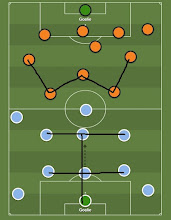The 1993 FIFA U-20 World Cup marked the tournament’s return to Australia,
which had first staged the competition in 1981.
Key Facts – 1993 Tournament
* Staged from 5 to 20 March with 16 teams divided into four groups.
* A total of 32 matches were played across the tournament.
* Host cities included Sydney, Adelaide, Melbourne, Brisbane and Canberra.
* It was the first major international youth competition featuring a
unified Germany and Russia following seismic political changes.
* Argentina’s U-20 side was serving a two-year suspension from FIFA
tournaments after players reacted violently to a 3-0 defeat against Portugal at
the 1991 edition, verbally abusing officials and showing indiscipline on the pitch.
* Europe’s six representatives came via the 1992 UEFA U-18 Championship: winners Turkey, runners-up Portugal, semi-finalists Norway and England, plus play-off winners Germany and Russia.
Joy for The Hosts and Selecao
Brazil, meanwhile, ended an eight-year wait for the title, making amends for their heartbreak in the 1991 final. Under coach Júlio César Leal, the Seleção were unbeaten throughout the tournament. Marcelinho Paulista and company swept aside the United States and Australia in the knockout rounds, before overcoming Ghana—the surprise package who had knocked out England in the semis—2-1 in the final to claim their third U-20 world crown.
Tournament Highlights
|
Grup A |
Grup B |
Grup C |
Grup D |
|
Russia |
Uruguay |
England |
Brasil |
|
Australia |
Ghana |
USA |
Mexico |
|
Cameroon |
Germany |
South Korea |
Saudi Arabia |
|
Colombia |
Portugal |
Turkiye |
Norway |
** = penalties
* = extra time
Quarterfinal:
-
Rusia
vs Ghana 0-3
-
Uruguay
vs Australia 1-2*
-
England
vs Mexico 0-0 (4-3)**
-
Brasil
vs USA 3-0
Semifinal:
-
Ghana
vs England 2-1
-
Australia
vs Brasil 0-2
3rd place Playoff: England vs Australia 2-1
Final: Brasil vs
Top scorer: Henry Zambrano
(Colombia) – 3 gol
MVP: Adriano Gerlin
(Brasil)
From Youth to Stardom
Two other alumni later made their mark not only as internationals but also as national team coaches at the 2022 World Cup: Gregg Berhalter, who managed the United States, and Rigobert Song, who led Cameroon’s Indomitable Lions.
Here is the list of players from the 1993 U-20 World Cup who went on to shine at senior level:
|
Players |
World Cup
edition (senior) |
|
Craig Moore ( |
2006, 2010 |
|
Pius N’Diefi
(Cameroon) |
2002 |
|
Patrick Suffo
(Cameroon) |
2002 |
|
David Embe
(Cameroon) |
1994 |
|
Marc Vivien
Foe (Cameroon) |
1994, 2002 |
|
Rigobert Song
(Cameroon) |
1994, 1998,
2002, 2010 |
|
Vladimir
Beschastnykh (Russia) |
1994, 2002 |
|
Nicky Butt
(England) |
2002 |
|
Choi Yong Soo
(South Korea) |
1998, 2002 |
|
Choi Sung Yong
(South Korea) |
1998 |
|
Emre Asik
(Turkiye) |
2002 |
|
Gregg
Berhalter (USA) |
2002 |
|
Carsten
Ramelow (Germany) |
2002 |
|
Dietmar Hamann
(Germany) |
1998, 2002 |
|
Carsten
Jancker (Germany) |
2002 |
|
Samuel
Kouffour ( |
2006 |
|
Dida (Brasil) |
2002, 2006 |
|
Oswaldo
Sanchez (Mexico) |
1998, 2002,
2006 |
|
Duilio Davino
(Mexico) |
1998 |
|
Joel Sanchez
(Mexico) |
1998 |
|
Jose Garcia
(Mexico) |
2002. 2006 |
|
Thomas Myhre
(Norway) |
1998 |
|
Khamis Owairan
(KSA) |
1998, 2002 |
|
Mohammed Al
Jahani (KSA) |
1998, 2002 |
|
Obeid Al
Dossary (KSA) |
1998, 2002 |
|
Hussein Al
Sadiq (KSA) |
1994, 1998 |
|
Fahad Al
Ghesheyan (KSA) |
1994 |


Comments
Post a Comment